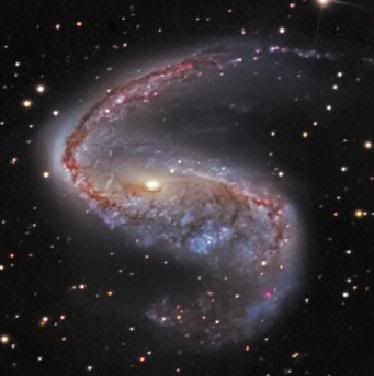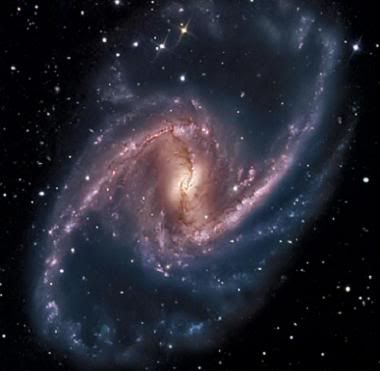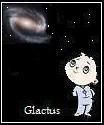Post by glactus on May 21, 2011 17:49:54 GMT

NGC 1300
NGC 1300 is a barred spiral galaxy about 61 million light-years away in the constellation of Eridanus. The galaxy is about 110,000 light-years across; just slightly larger than our own galaxy, the Milky Way. It may be part of the Eridanus Cluster and was discovered by John Frederick William Herschel in 1835.
Blue and red supergiant stars, star clusters, and star-forming regions are well resolved across the spiral arms, and dust lanes trace out fine structures in the disk and bar. In the core of NGC 1300, the nucleus shows its own extraordinary and distinct "grand-design" spiral structure that is about 3,300 light-years long. Apparent magnitudr is 11.4

NGC 2442
NGC 2442 / 2443 is an intermediate spiral galaxy about 50 million light-years away in the constellation of Volans. It was discovered by Sir John Herschel. Associated with this galaxy is HIPASS J0731-69, a cloud of gas devoid of any stars. It is likely that the cloud was torn loose from NGC 2442 by a companion.
Click on URL below to see video of NGC 2442. Has sound.
www.youtube.com/watch?v=8YoOyKkw4Wg

NGC 1365 Galaxy
NGC 1365, also known as the Great Barred Spiral Galaxy, is about 56 million light-years away in the constellation of Fornax. Apparent magnitude is 10.2. The core is an oval shape and the spiral arms extend in a curve north and south from the ends of the east-west bar and form an almost ring like Z-shaped halo.
Supernovae 2001du, 1983V, and 1957C have also been observed in NGC 1365. The galaxy is a member of the Fornax Cluster of Galaxies. Because NGC 1365 is relatively nearby, simultaneous measurements of its speed and distance are possible, which help astronomers estimate how fast our universe is expanding.

NGC 1300
Credits: These are NASA/ Hubble images.
Text by Wikepedia/Glactus


